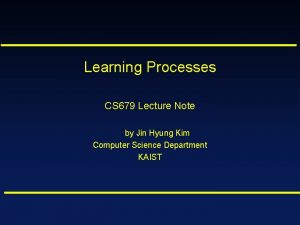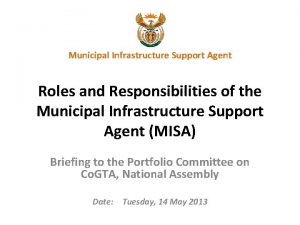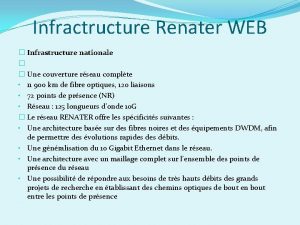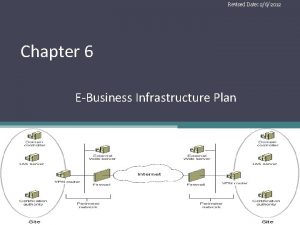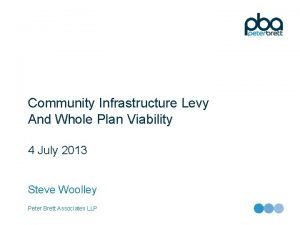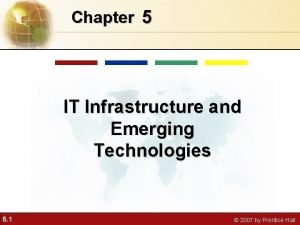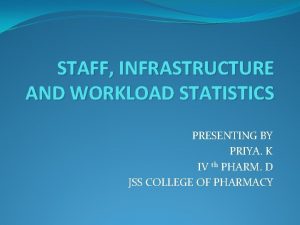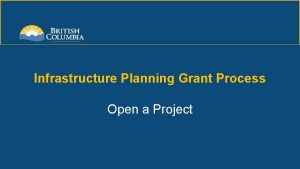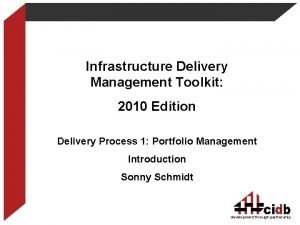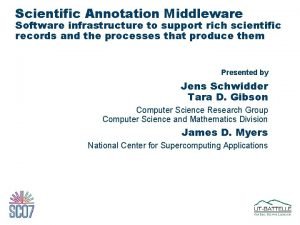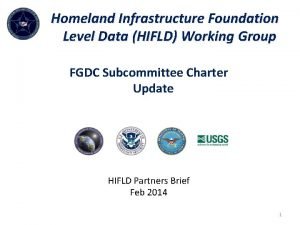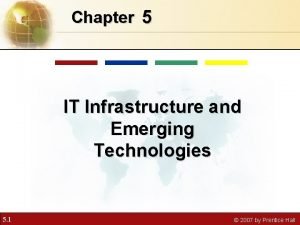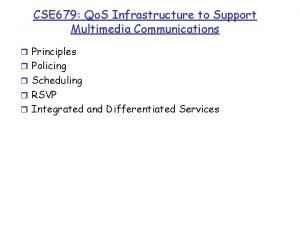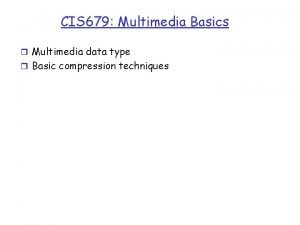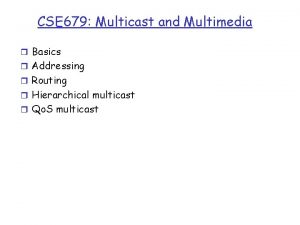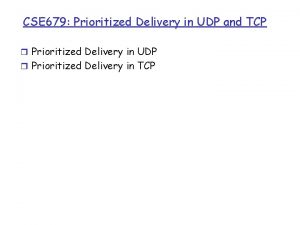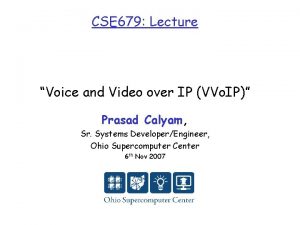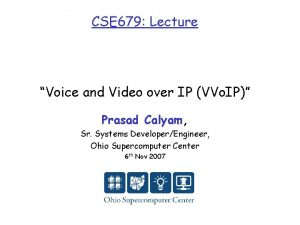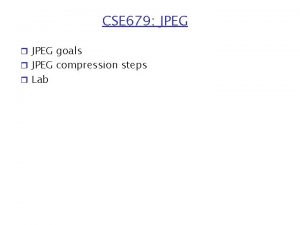CSE 679 Qo S Infrastructure to Support Multimedia

































- Slides: 33

CSE 679: Qo. S Infrastructure to Support Multimedia Communications r Principles r Policing r Scheduling r RSVP r Integrated and Differentiated Services

Improving QOS in IP Networks r IETF groups are working on proposals to provide better QOS control in IP networks, i. e. , going beyond best effort to provide some assurance for QOS r Work in Progress includes RSVP, Integrated Services, and Differentiated Services r Simple model for sharing and congestion studies:

How to provide Qo. S?

Principles for QOS Guarantees r Consider a phone application at 1 Mbps and an FTP application sharing a 1. 5 Mbps link. m m bursts of FTP can congest the router and cause audio packets to be dropped. want to give priority to audio over FTP r PRINCIPLE 1: Marking of packets is needed for router to distinguish between different classes; and new router policy to treat packets accordingly

Principles for QOS Guarantees (more) r Applications misbehave (audio sends packets at a rate higher than 1 Mbps assumed above); r PRINCIPLE 2: provide protection (isolation) for one class from other classes r Require Policing Mechanisms to ensure sources adhere to bandwidth requirements; Marking and Policing need to be done at the edges:

Principles for QOS Guarantees (more) r Alternative to Marking and Policing: allocate a set portion of bandwidth to each application flow; can lead to inefficient use of bandwidth if one of the flows does not use its allocation r PRINCIPLE 3: While providing isolation, it is desirable to use resources as efficiently as possible

Principles for QOS Guarantees (more) r Cannot support traffic beyond link capacity r PRINCIPLE 4: Need a Call Admission Process; application flow declares its needs, network may block call if it cannot satisfy the needs

Policing Mechanisms r Three criteria: m (Long term) Average Rate (100 packets per sec or 6000 packets per min? ? ), crucial aspect is the interval length m Peak Rate: e. g. , 6000 p p minute Avg and 1500 p p sec Peak m (Max. ) Burst Size: Max. number of packets sent consecutively, ie over a short period of time

Policing Mechanisms r Token Bucket mechanism, provides a means for limiting input to specified Burst Size and Average Rate.

Policing Mechanisms (more) r Bucket can hold b tokens; token are generated at a rate of r token/sec unless bucket is full of tokens. r Over an interval of length t, the number of packets that are admitted is less than or equal to (r t + b).

Scheduling Mechanisms r Scheduling: choosing the next packet for transmission on a link can be done following a number of policies; r FIFO: in order of arrival to the queue; packets that arrive to a full buffer are either discarded, or a discard policy is used to determine which packet to discard among the arrival and those already queued

Scheduling Policies r Priority Queuing: classes have different priorities; class may depend on explicit marking or other header info, eg IP source or destination, TCP Port numbers, etc. r Transmit a packet from the highest priority class with a nonempty queue r Preemptive and non-preemptive versions

Scheduling r Scheduling: m FIFO m Priority Scheduling (static priority) m Round Robin m Weight Fair Queuing (WFQ)

Priority-driven Scheduler r packets are transmitted according to their priorities; within the same priority, packets are served in FIFO order. r Complex in terms of no provable bounded delay due to no flow isolation r Simple in terms of no per-flow management: SP make it possible to decouple Qo. S control from the core-router. D = ? ? max

Round Robin r Round Robin: scan class queues serving one from each class that has a non-empty queue

WFQ r Weighted Fair Queuing: is a generalized Round Robin in which an attempt is made to provide a class with a differentiated amount of service over a given period of time

Resource Configuration r Traffic engineering m Qo. S routing m Resource provisioning r Network planning m Network design

Admission Control r Session must first declare its QOS requirement and characterize the traffic it will send through the network r R-spec: defines the QOS being requested r T-spec: defines the traffic characteristics r A signaling protocol is needed to carry the R-spec and T-spec to the routers where reservation is required; RSVP is a leading candidate for such signaling protocol

Admission Control r Call Admission: routers will admit calls based on their R-spec and T-spec and base on the current resource allocated at the routers to other calls.

Reservation Protocol: RSVP Upper layer protocols and applications IP service interface IP ICMP IGMP RSVP Link layer service interface Link layer modules

RSVP r Used on connectionless networks r Relies on soft state: reservations must be refreshed and do not have to be explicitly deleted r Aims to support multicast as effectively as unicast flows - mcast apps good candidates for real-time, and are heterogeneous r Receiver-oriented approach

Basic Message Types r PATH message r RESV message r CONFIRMATION message m generated only upon request m unicast to receiver when RESV reaches node with established state r TEARDOWN message r ERROR message (if path or RESV fails)

Making A Reservation r Receivers make reservation r Before making a reservation, receiver must know: m type of traffic sender will send (Tspec) m path the sender’s packets will follow r Both can be accomplished by sending PATH messages

PATH Messages r PATH messages carry sender’s Tspec r Routers note the direction PATH messages arrived and set up reverse path to sender r Receivers send RESV messages that follow reverse path and setup reservations r If reservation cannot be made, user gets an error

PATH and RESV messages Sender 1 Sender 2 PATH RESV (merged) RESV R R R receiver 1 RESV receiver 2

Soft State r Routing protocol makes routing changes, RSVP adjusts reservation state r In absence of route or membership changes, periodic PATH and RESV msgs refresh established reservation state r When change, new PATH msgs follow new path, new RESV msgs set reservation r Non-refreshed state times out automatically

Router handling of RESV messages r If new request rejected, send error message r If admitted: m install packet filter into forwarding dbase m pass flow parameters to scheduler m activate packet policing if needed m forward RESV msg upstream

Two Qo. S Planes r Control-Plane m Call management (setup, signaling (RSVP) and tear-down) m Admission control (delay computation etc) m and resource provisioning (off-line), path determination (shortest-path routing, MPLS) etc. r Data-Plane: m Packet forwarding (controlled by schedulers, such as rate -based schedulers, e. g. WFQ and priority-based schedulers, e. g. Static Priority)

Integrated Services (Int-Serv) r An architecture for providing QOS guarantees in IP networks for individual application sessions r relies on resource reservation, and routers need to maintain state info (Virtual Circuit? ? ), maintaining records of allocated resources and responding to new Call setup requests on that basis

Differentiated Services (Diff-Serv) Model q Basic Idea o Services classification o Flow aggregation q Relative Differentiated Services o provide per-hop, per-class relative services q Absolute Differentiated Services: o provide Int. Serv-type end-to-end absolute performance o guarantees without per-flow state in the network core

Differentiated Services r Intended to address the following difficulties with Intserv and RSVP; r Scalability: maintaining states by routers in high speed networks is difficult sue to the very large number of flows r Flexible Service Models: Intserv has only two classes; want to provide ‘relative’ service distinction (Platinum, Gold, Silver, …) r Simpler signaling: (than RSVP) many applications and users may only want to specify a more qualitative notion of service

Differentiated Services r Approach: m Only simple functions in the core, and relatively complex functions at edge routers (or hosts) m Do not define service classes, instead provides functional components with which service classes can be built

Edge Functions r At DS-capable host or first DS-capable router r Classification: edge node marks packets according to classification rules to be specified (manually by admin, or by some TBD protocol) r Traffic Conditioning: edge node may delay and then forward or may discard
 Cs 679
Cs 679 679/12
679/12 Galatians 679
Galatians 679 151 rounded to the nearest ten
151 rounded to the nearest ten Electric commerce
Electric commerce Municipal infrastructure support agent
Municipal infrastructure support agent Csc 253
Csc 253 Esa multimedia.esa.int./multimedia/virtual-tour-iss
Esa multimedia.esa.int./multimedia/virtual-tour-iss Multimedia becomes interactive multimedia when
Multimedia becomes interactive multimedia when Application of multimedia
Application of multimedia Signal words example
Signal words example Unified communications infrastructure
Unified communications infrastructure E business infrastructure
E business infrastructure Presidential infrastructure coordinating commission
Presidential infrastructure coordinating commission Pmca defence
Pmca defence Web infrastructure
Web infrastructure European grid infrastructure
European grid infrastructure Key management issues of e business infrastructure
Key management issues of e business infrastructure Microsoft infrastructure optimization
Microsoft infrastructure optimization Cisco vsg eol
Cisco vsg eol Community infrastructure levy questions
Community infrastructure levy questions Ecosystem marketing
Ecosystem marketing Mobile infrastructure project
Mobile infrastructure project Computer hardware platforms in it infrastructure
Computer hardware platforms in it infrastructure Microsoft virtual academy free online training
Microsoft virtual academy free online training Big data test infrastructure
Big data test infrastructure Workload statistics in hospital pharmacy slideshare
Workload statistics in hospital pharmacy slideshare Infrastructure planning grant program
Infrastructure planning grant program Vir infrastructure
Vir infrastructure Cellular system
Cellular system Infrastructure delivery management system
Infrastructure delivery management system Infrastructure and middleware software
Infrastructure and middleware software Homeland infrastructure foundation-level data
Homeland infrastructure foundation-level data It infrastructure and emerging technologies
It infrastructure and emerging technologies
